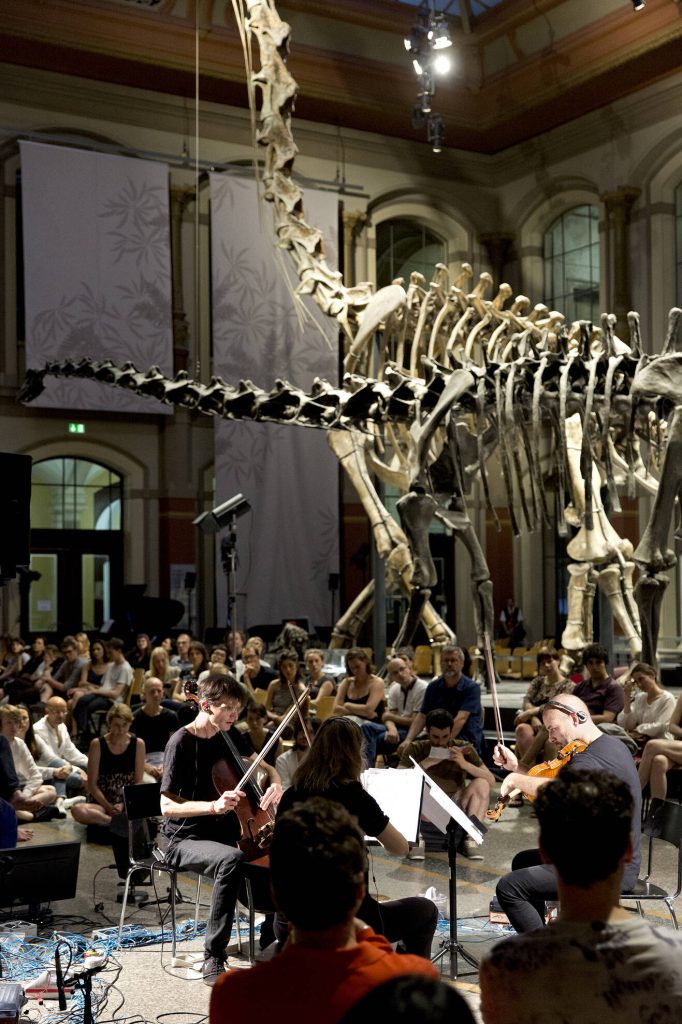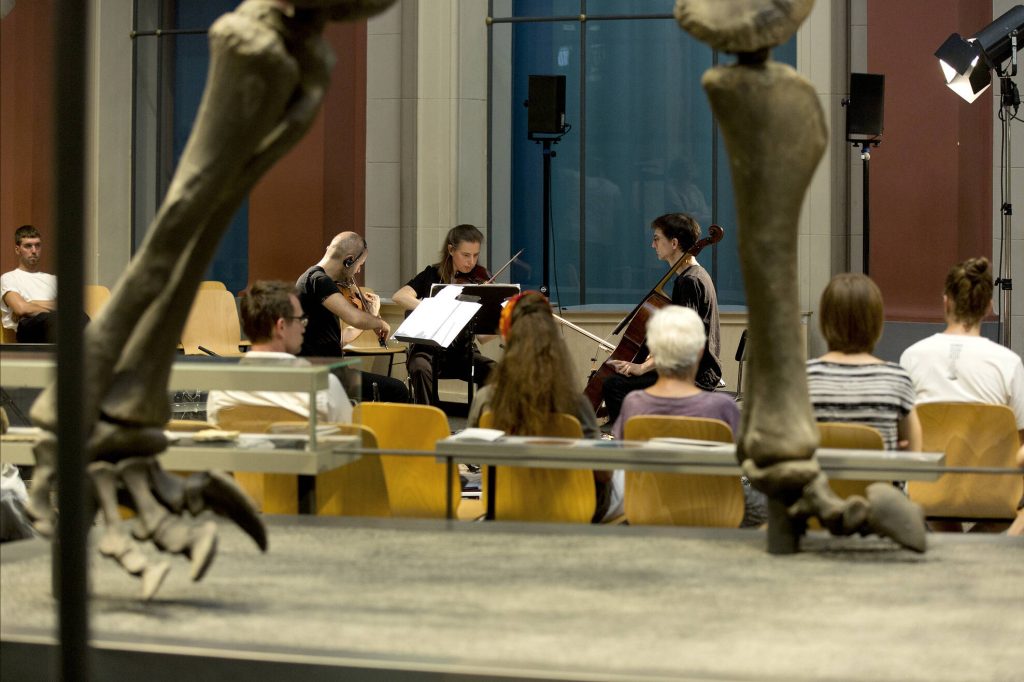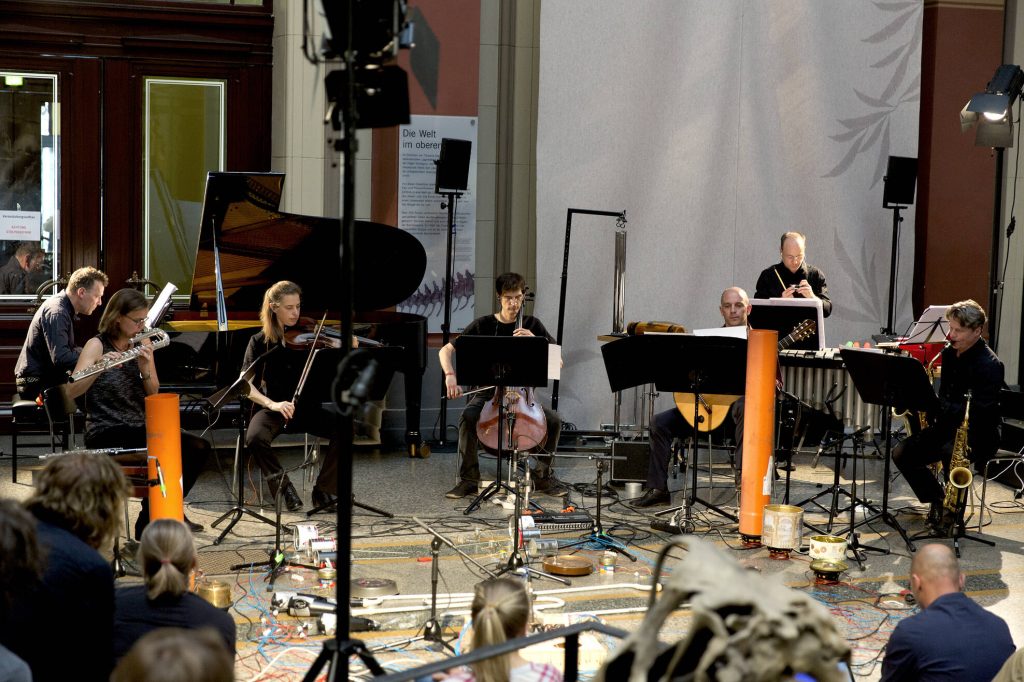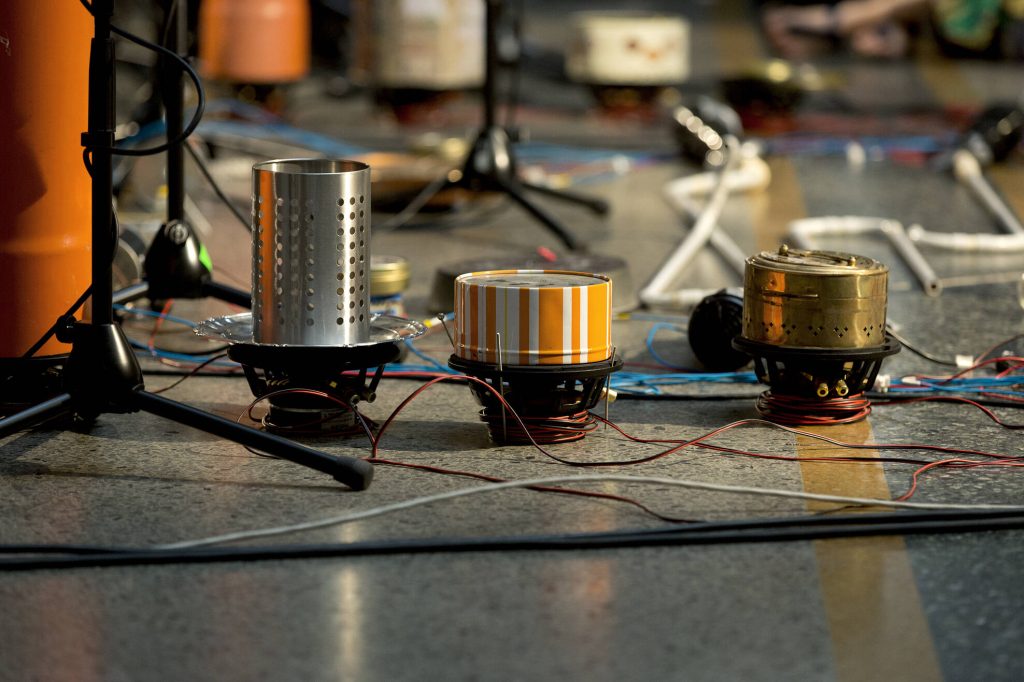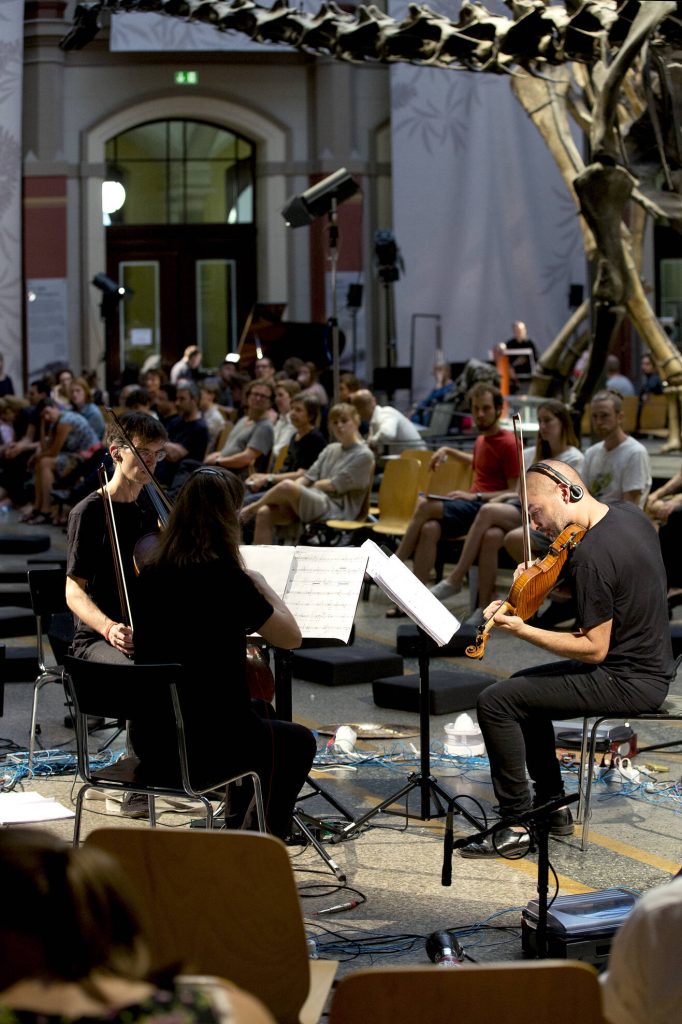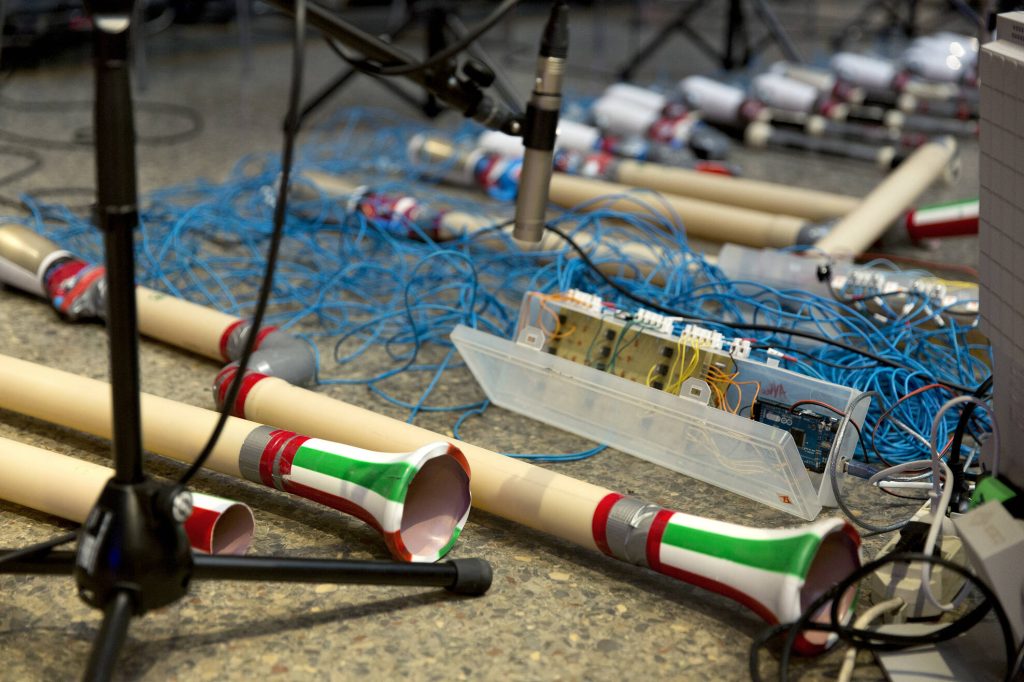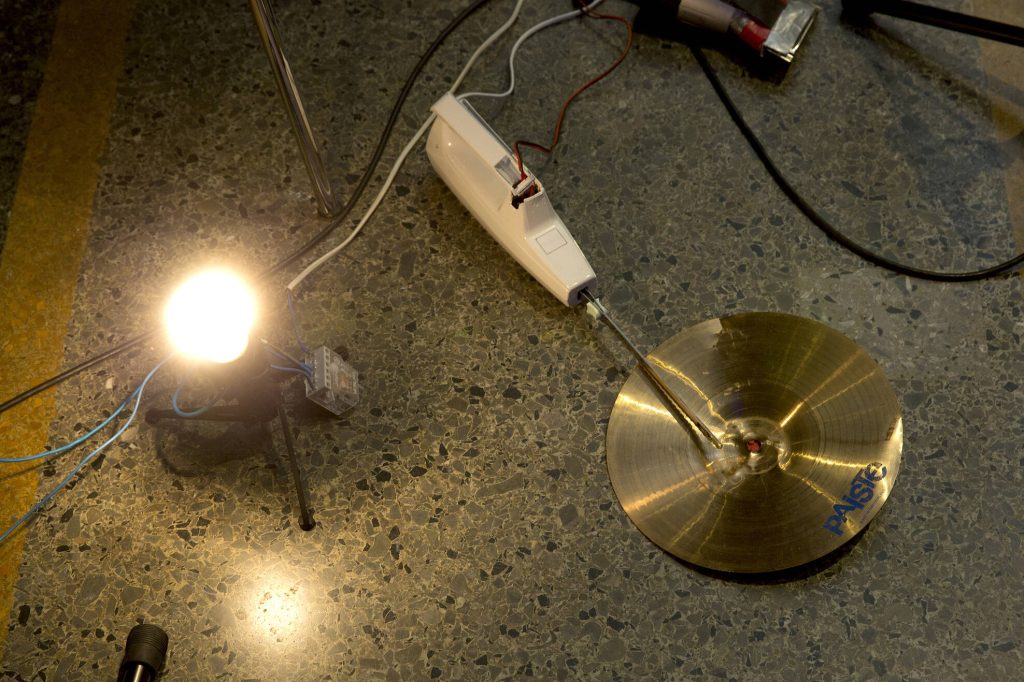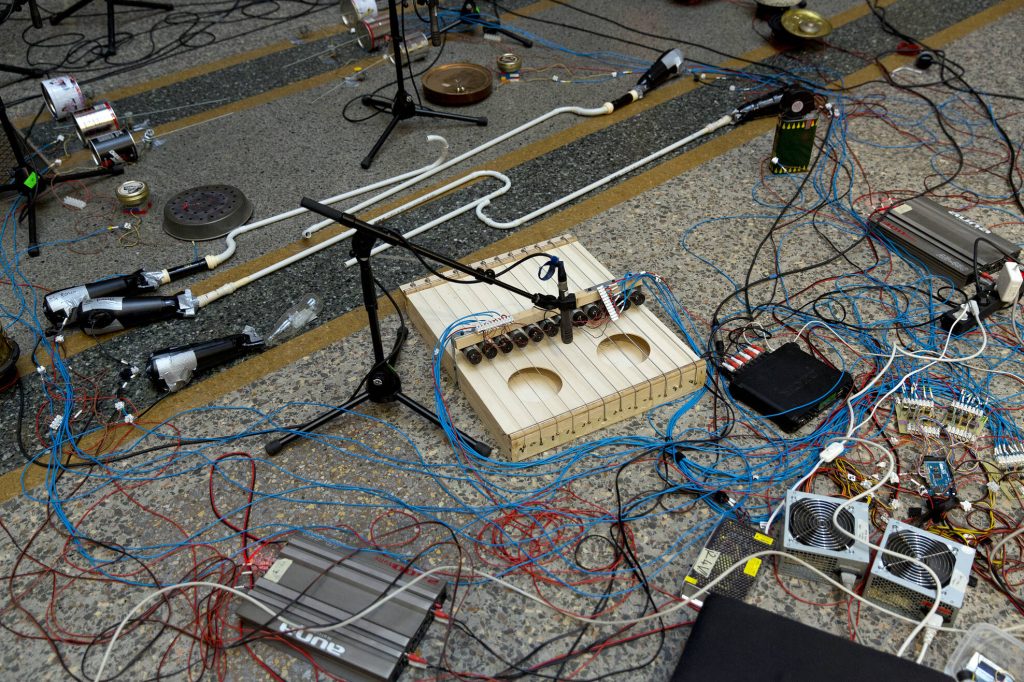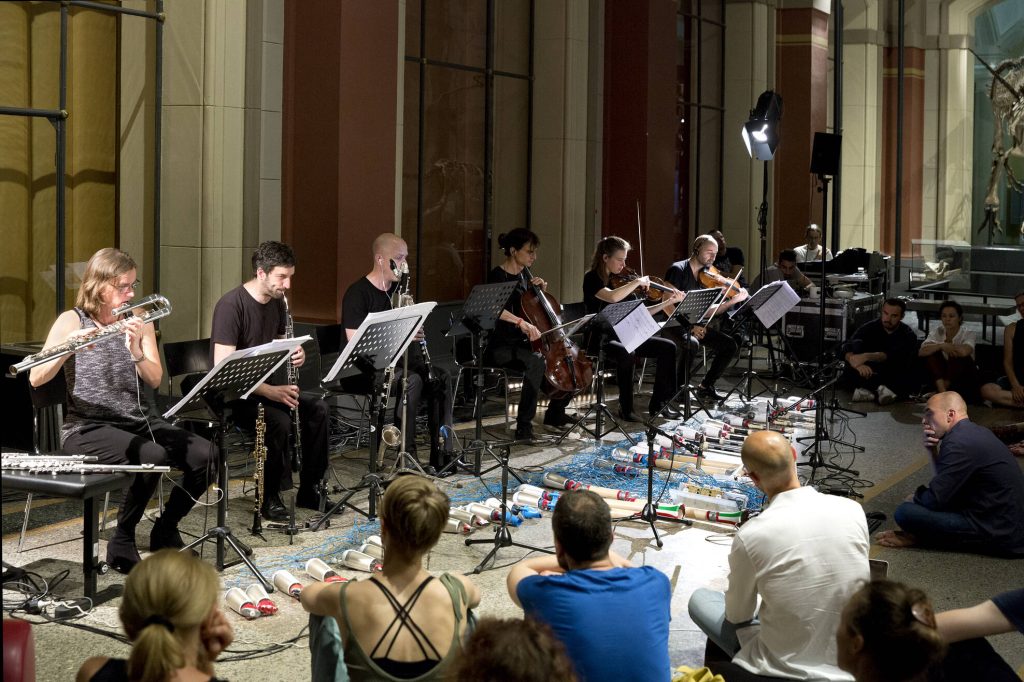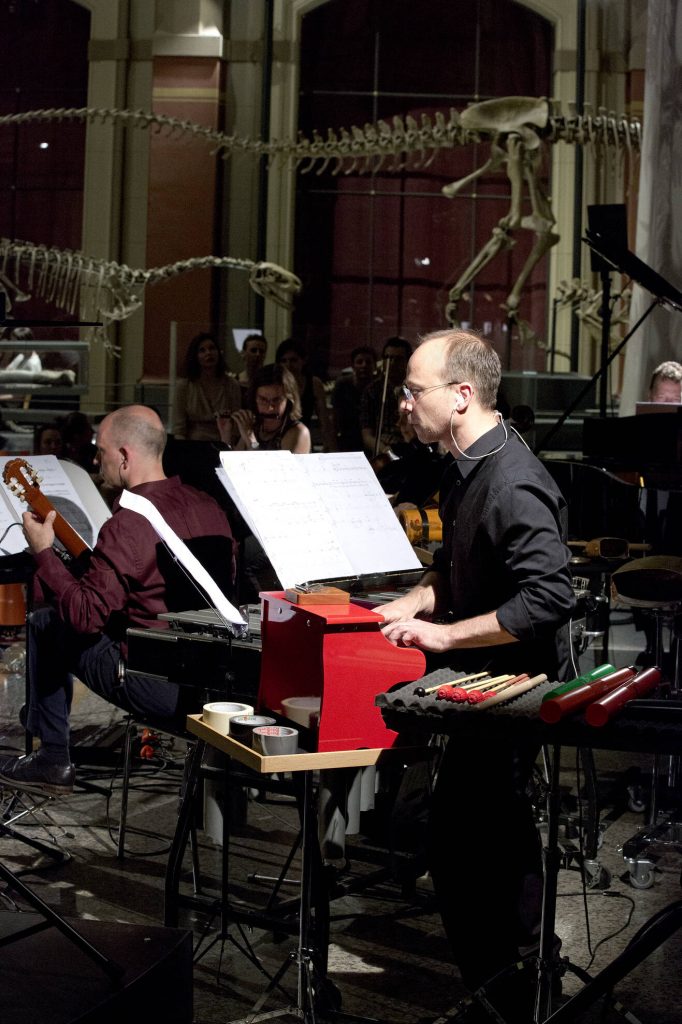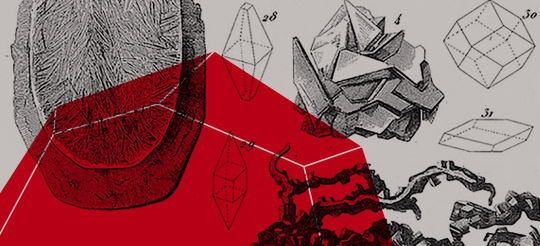Mauro Lanza / Andrea Valle: SYSTEMA NATURAE
In ihrem vierteiligen Zyklus Systema Naturae beziehen sich Mauro Lanza und Andrea Valle auf die im Mittelalter entwickelte Katalogisierung von Forschungsobjekten und auf die Klassifizierungslehre, die systematische Beschreibung lebender Organismen nach Linneaus’ Systema Naturae. Jeder Teil des Zyklus’ thematisiert eine Sparte der Natur bzw. Naturerforschung: Regnum animale (2013), Regnum vegetabile (2014), Regnum lapideum (2016) und Fossilia (UA, 2016/17):
„Regnum animale features a string trio surrounded by an amass of devices built from discarded, scavenged every-day objects and appliances. The piece is a sequence of very short pieces, each one lasting approximately 40” and dedicated to an imaginary animal.
In Regnum vegetabile the main reference from the plant regnum are cacti, green plants with wooden-like structures and animal-like jaws. Thus, cacti well represent the many possibilities in which nature shapes its beings. The setup includes a sextet and 30 modified hair dryers that operate various wind instruments (recorders, harmonicas, toy trumpets, and so on).
Regnum Lapideum is specifically based on percussive and plucked sources, both on the acoustic and the electromechanical side. Thus, the piece favors a metallic, percussive approach.
Even if not a fourth kingdom in Linnaeus, fossils offer an interesting terminative notion for the cycle as they can be seen as a reduction to minerals of both animals and vegetables. This “fossil” mood is at the core of the piece, scored for all instruments and electromechanical devices. In this sense, Fossilia has to be played after the three Regna, as it needs not only all the musicians, but also all the three setups.“ (Mauro Lanza & Andrea Valle)
Die Uraufführung des Gesamtzyklus wird räumlich im Sauriersaal des Museum für Naturkunde Berlin inszeniert, Spielpositionen und elektromechanische Instrumente an verschiedenen Orten arrangiert. Dem sinnlichen Reiz der Musik und der Instrumente wird Rechnung getragen indem sie aus nächster Nähe zu hören und zu betrachten sind. Dabei eröffnen die umgebenden Ausstellungsobjekte dem Publikum eine zusätzliche Reflexionsebene und geben dem Wandelkonzert eine besondere Atmosphäre.
